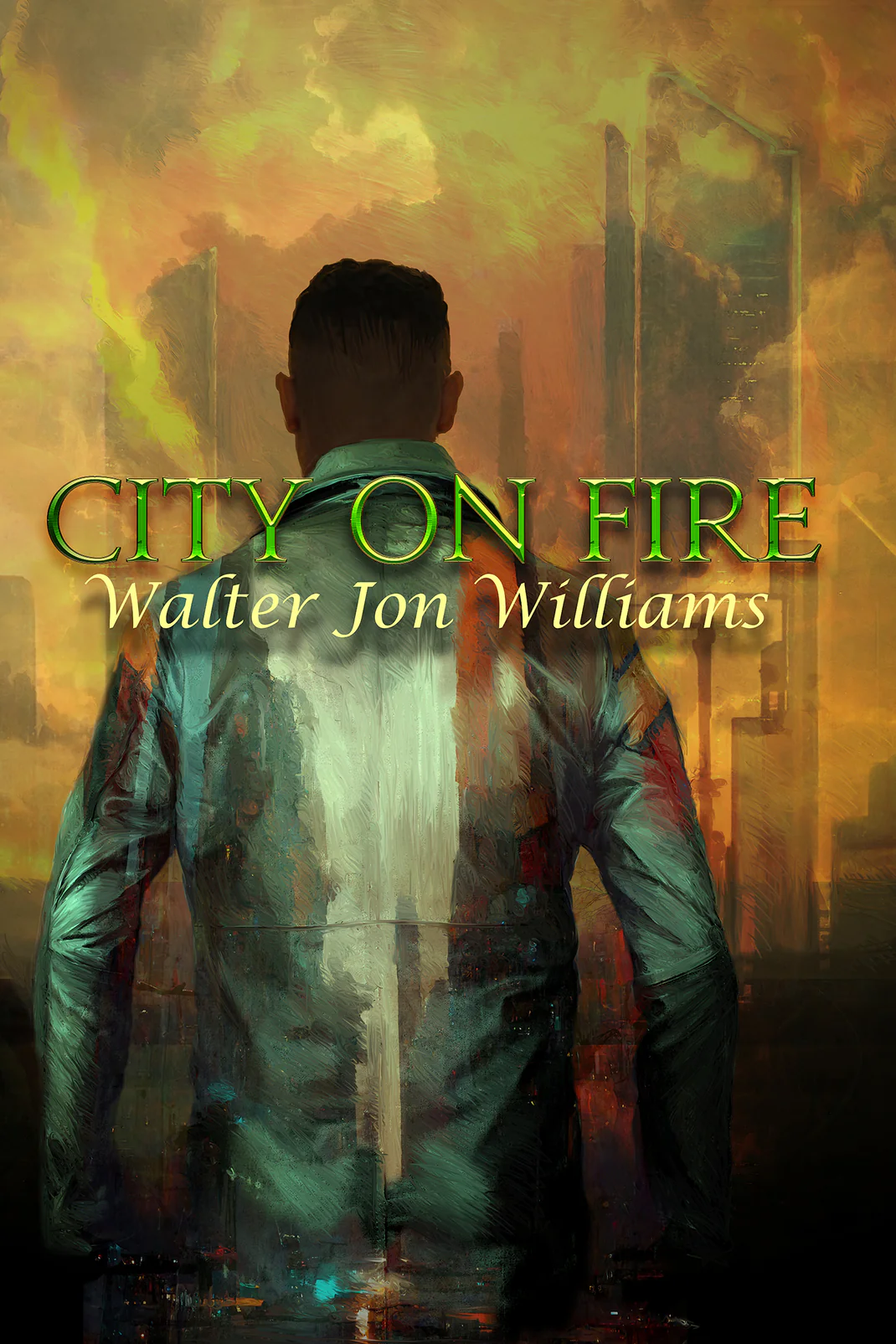City on Fire

Review
City on Fire, by , is the second book in the Metropolitan series. It picks up right as the smoke clears in Caraqui after the revolution, leaving Aiah and Constantine to figure out how to govern.
The first book, Metropolitan, was a standard fantasy story—the hero discovers their inner talent and uses it to overthrow an evil ruler—set in a unique world. City on Fire’s story is more original. It focuses on what happens after the revolution: when the heroes have to govern, form a coalition among opposing factions, and compromise their morals to avoid collapse. In this way, it’s similar to The Tainted Cup from the Shadow of the Leviathan series, which is also more concerned with what is required to keep an empire running. The transition from revolution to government should have been more interesting—it’s a rarely explored part of these kinds of stories—but I just didn’t enjoy following Aiah very much.
Aiah is a more complex character in this book, and I enjoyed reading about her more than in Metropolitan, though that’s still not saying much. Her main flaw, that she’s blinded by her devotion to Constantine, is somewhat counterbalanced by her other “flaw”: she refuses to compromise her ideals for power. This plays out most clearly in her affair with Constantine, but the relationship just did not interest me. I did not care if they stayed together, nor how it changed them. In some ways, the book reminded me of a romance novel: the young, inexperienced woman catches the attention of a powerful and dangerous man, who shows her that there’s more to life than she imagined. And there are a lot of sex scenes.
This book and Metropolitan—written nearly thirty years ago—feel very modern: the main characters are people of color, there are gay relationships treated as completely normal, and women occupy roles usually reserved for men. The theme of having to compromise your ideals in order to govern hits especially hard in a time when the far right is ascendant as the opposition parties fail to overcome their differences and rally together.
But in other ways, the Metropolitan series is rooted in 90s Third Way politics: the first thing Constantine does in Caraqui is sell off government industries to private buyers, lower trade barriers, and simplify the tax code. The entire revolution and its messy aftermath echo the waves of humanitarian intervention from the same period. There’s even a scene about eating grapefruit to stay thin, which feels straight out of the 90s anorexia panic.
City on Fire is the middle volume of a still-unfinished trilogy, with the third book tentatively titled Heaven in Flames. As a middle book, it resolves some of Metropolitan’s open threads while introducing more. Taikoen is revealed to be, in some perverse way, a friend and advisor to Constantine, and Aiah’s destruction of the hanged man becomes a wedge between her and Constantine. I wish the book had spent more time on the Constantine–Taikoen relationship because it is not well foreshadowed, but that’s hard to do when everything is seen from Aiah’s point of view. Sorya becomes a clear antagonist, but the resolution is left for the next book. We get a bit more about the shield, as Aiah briefly pierces it, but that too is being saved for later.
The book reminded me of a few other works:
- The little shrines with devotion candles in the plasm stations felt straight out of Warhammer 40,000, with its mix of technology and religion.
- The way major military actions are sometimes covered in just a sentence felt like the end of ’s Use of Weapons.
- The ever-expanding narrative, full of unresolved threads, recalled the later books in ’s A Song of Ice and Fire, especially A Feast for Crows.
- The Dreaming Sisters’ tarot-like archetypes called “Imagoes” share a name with the memory devices in ’s A Memory Called Empire—which is how I learned it’s a real word meaning: “An idealized concept of a loved one, formed in childhood and retained unconsciously into adult life, the basis for the psychological formation of personality archetypes.”
I hope finishes Heaven in Flames and ties up the loose ends, but after three decades, I’m not holding my breath.